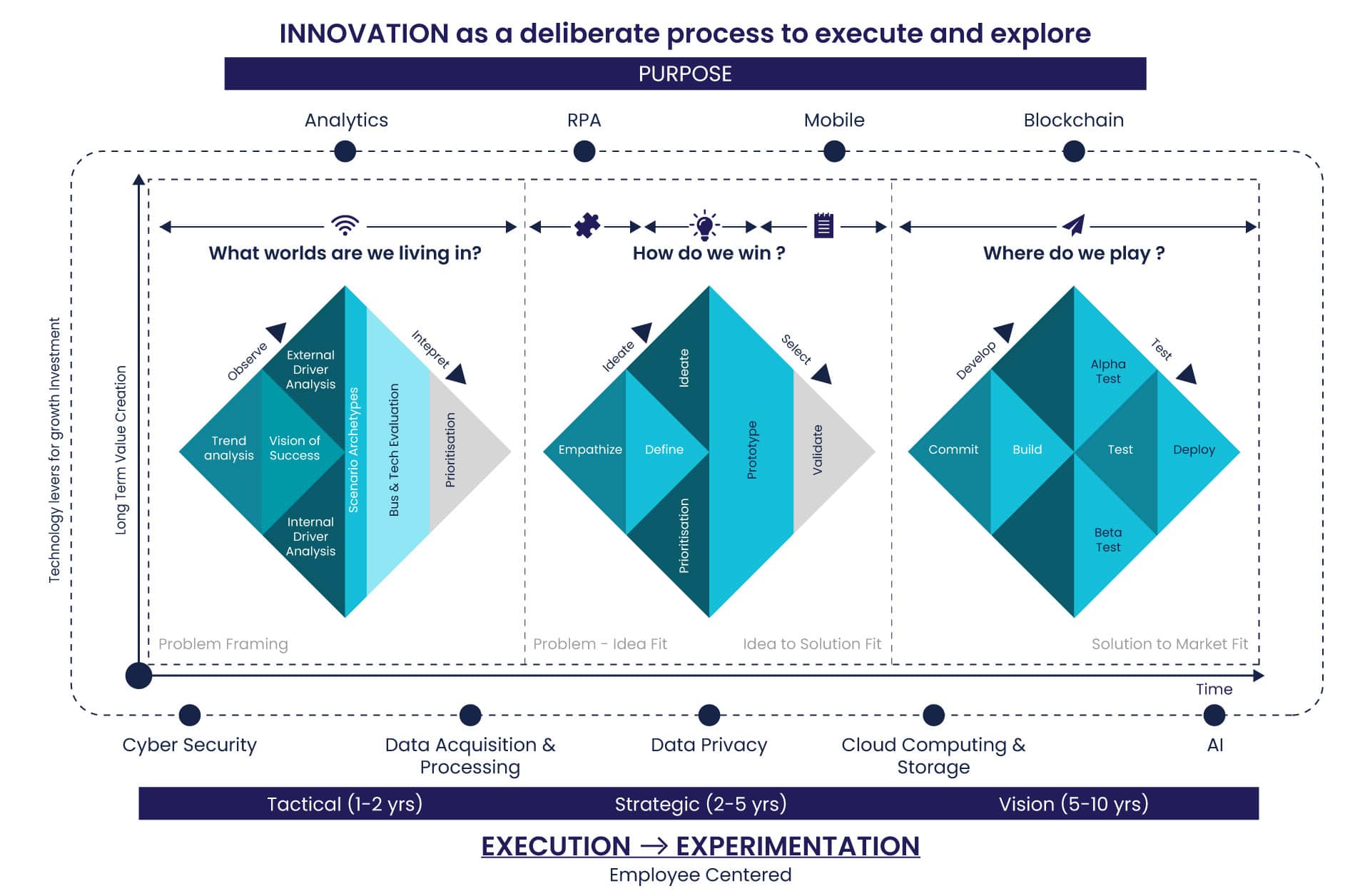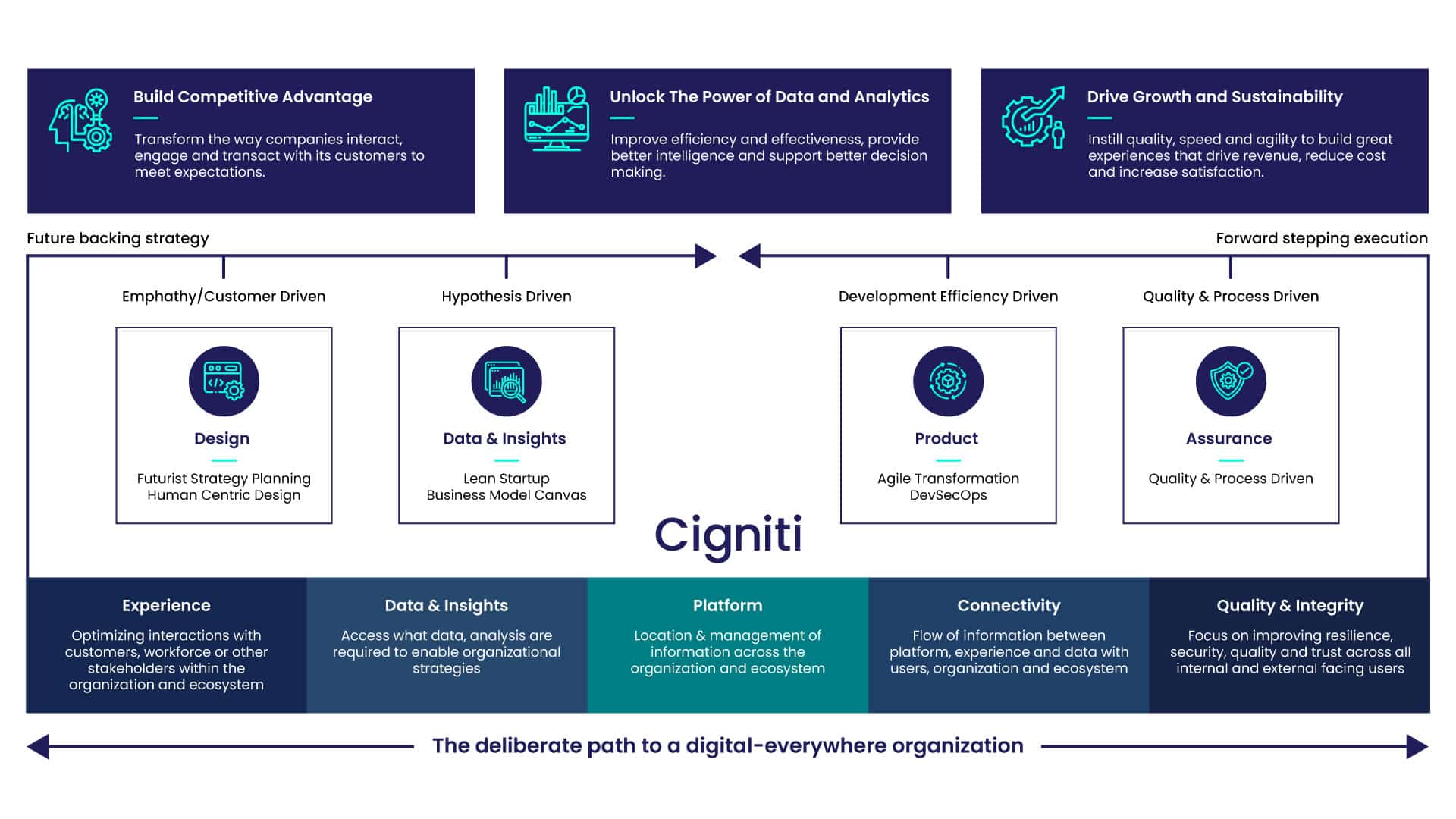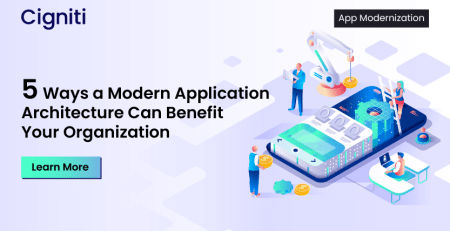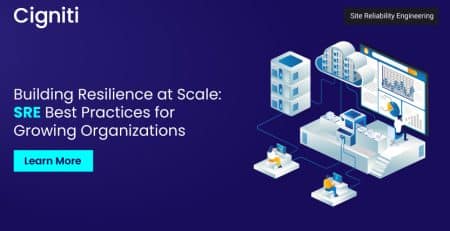Programmatic Innovation as a Pathway to not only Survive but Thrive in the Era of Disruption
“Programmatic innovation in essence cultivates the ability for organizations to learn continuously from doing deliberately”
Success for any company whether a large incumbent or an upstart disruptor is defined by its ability to continuously exploit opportunities in its current business model while exploring new possibilities from the emerging needs of its key stakeholders.
The ability for companies to execute in this arc has also been precipitated by the increasing complexity and breadth of stakeholder needs whether in the care for the climate, the highly networked societies within, and the diverse communities that its customers and employees work and live in.
Programmatic Innovation is the pathway to this execution and assures that companies not only survive but thrive irrespectively when faced with the dynamic nature of disruptions in the world today.
Understanding the nature of disruptive change facing businesses today
“This is the true north star for any organization looking to thrive in today’s uncertainty. The ability to understand the deeper needs of customers, leverage empathy to harness technology as an enabler, and deliver products with experiences that respect and value such needs.”
The nature of disruptive innovation made famous by renowned Harvard Business School Professor Clayton Christensen in his seminal book has changed. Industry disruptors harnessing advancing technologies from footholds of underserved markets are not just emerging from current industries of incumbents but from completely new trajectories at a speed and scale unseen in any previous industrial era.
Vivek Wadwa, Ismail Amla, and Alex Salkever in their book ‘From Incremental to Exponential’ take the advancing technology theory further by setting a new context for innovation in what they term an exponential market era.
Quoting Eric Brynolfson and Andrew McAfee from their book ‘The Second Machine Age’ they said “computers and other digital advances are doing for mental power, what the steam engine and its descendants did for muscle power”.
The ability to use our mental power to shape the environment is not only being seen in the supply of new innovation but also in how its shapes demand and the success of adoption by customers. Wadwa, Amla, and Salkever make a great point that “in the past, it was institutions with trust that mattered, but increasingly reputation lies with what an individual or community thinks of it. Ratings and reviews have become more important than the brand, its marketing, or advertising”.
Building trust is certainly the currency in business today and must be exchanged with utmost care.
As I reflect on the nature of advancing technologies that will shape the future, the potential of AI/ML is certainly a catalyst for the mental power that Brynolfson and McAfee refer to above. Most companies today are just at the beginning of realizing the ever-decreasing value of marginal data by time-shifting the past to infer the present.
We at Cigniti believe that true prediction enabled by AI/ML will lead to a new generation of disruptors that will both exploit and explore knowledge from time shifting the future into the present, and leading to entirely new industries. As the saying goes, knowledge is power, but understanding this new context is the kingdom.
This is the true north star for any organization looking to thrive in today’s uncertainty. The ability to understand the deeper needs of customers, leverage empathy to harness technology as an enabler, and deliver products with experiences that respect and value such needs.
Innovation is the center of gravity
“Innovation is ultimately how well companies combine all 3 dimensions of a strong culture that values change as the only constant, which leads to a deliberate process that can execute and explore across a portfolio of intended outcomes to turn uncertainty in dynamic market conditions into possibility.”
Our experience working with clients across the world has shown multiple dimensions of how innovation is seen and applied in an organization. For many, it is a cultural value to rally an organization sullied by inertia that often arises from the view that “tomorrow will be very much like today, and the day after much the same.
Some see it as a process across the arc of ideation, incubation, and scaling of ideas enabled by advanced technologies that can not only react but create disruptive change. Others certainly see innovation as an outcome used to differentiate value creation across the organization both through technology and new ways of working to sustain the execution of current business models, exploit near adjacencies or define architecturally from new or not seen value.
Innovation is ultimately how well companies combine all three dimensions of a strong culture that values change as the only constant, which leads to a deliberate process that can execute and explore across a portfolio of intended outcomes to turn uncertainty in dynamic market conditions into possibility.
This view is echoed by Robert Alexander Burgleman, Professor of Management at Stanford in his extensive research of organizational design. His research shows that successful businesses are characterized by “maintaining bottom-up internal experimentation and selection processes while simultaneously maintaining top-driven strategic intent”.
Whether a small startup or a large legacy company, Burgleman’s view is that building the muscle for change and resilience requires a deliberate process that engages the organization holistically for continuous performance. This deliberate process is what we at Cigniti term ‘Programmatic Innovation’.
Programmatic innovation as the pathway to guide execution and exploration equally
“The ability to comprehend complex and rapidly changing future scenarios accurately, harness the impact of advancing technologies while keeping the short and long term goal in mind will separate the best organizations from the rest.”

General Stockdale, a prisoner of war in Vietnam for nearly seven years whose views were made famous by Jim Collins’s bestselling book ‘From Good to Great’ summed up the challenge now facing all organizations and leaders within such a reality.
“You must never confuse faith that you will prevail in the end—which you can never afford to lose—with the discipline to confront the most brutal facts of your current reality, whatever they might be.”
The future is certainly fluid and situating an expansive planning process that incorporates multiple signals for imminent change or what General Stockdale refers to as “brutal facts of your current reality” is imperative.
The ability to comprehend complex and rapidly changing future scenarios accurately, and harness the impact of advancing technologies while keeping short and long-term goals in mind will separate the best organizations from the rest.
Cigniti’s full spectrum of digital engineering and quality assurance services supports companies seeking this clarity and resilience in executing successfully for these future scenarios.
Our service offerings highlighted below are aligned along this pathway of programmatic innovation that begins with developing a better understanding of the realities faced, generating winning ideas within multiple such realities to leveraging experimentation enabled by advancing digital technologies and methodologies for successful execution.
- Data and Insights - Ensure the availability of the right data at the right time to generate both descriptive and predictive insights, that are required to frame problem statements and build a hypothesis that challenges past assumptions.
- Experience - Utilize our deep expertise in agile software engineering and human-centric design to deliver the experience that users demand. The mature practice ensures a rapid evolution from ideation to prototyping to MVP and Deployment.
- Platform and Connectivity - Ensure the continuous flow of information and resilience in deployment within the design, development, and operations of products and services.
- Quality & Testing – Leverage proactive quality engineering to assure the integrity of business outcomes and ensure the building of trust with customers.
As my blog on data-driven culture recently highlighted, the gel between leadership in today’s disruptive environments and successful execution is a strong culture that values curiosity to recognize change and rethink past assumptions, virtued to seek new data for insights, and courageous in executing new possibilities believing that failure is merely the first attempt at learning.
This culture must be supported by a systematic practice that fosters innovation from the bottom up. Programmatic Innovation in essence cultivates the ability for organizations to learn continuously from doing deliberately in this manner.





Leave a Reply